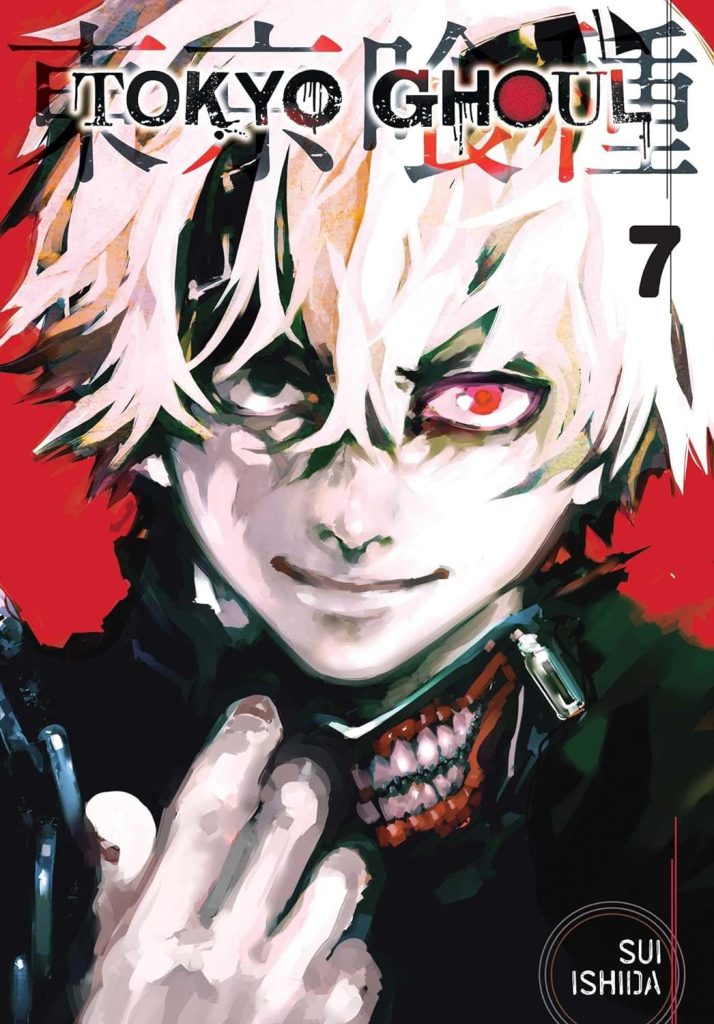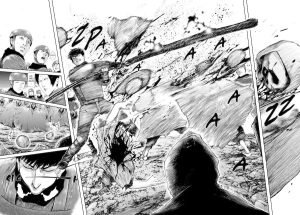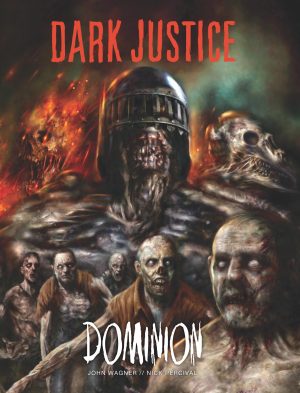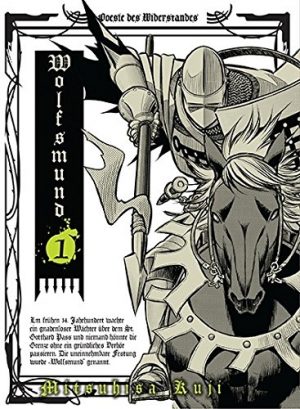Review by Ian Keogh
Seven volumes in and Sui Ishida’s Toyko Ghoul has become so complicated that 23 cast members are listed on the opening spread, covering three separate groups, and that’s set to increase in future volumes. Nine of them are the Aogiri Tree ghouls who’ve taken over the 11th ward, as introduced in Tokyo Ghoul 6. That ended with the unfortunate Ken Kaneki, part ghoul, part human, well and truly deceived.
The focus is initially away from Kaneki and on those planning to rescue him, a party including some unlikely ghouls. It’s an operation that may be compromised because the CCG are also in the process of attacking the ghouls’ Ward 11 stronghold. When we finally reconnect with Kaneki in the third chapter it’s during a gruesome torture scene, used to establish just how hateful Yamori is, yet Ishida lets us know that brutality was founded on what Yamori himself endured.
Allowing for a flashback and associated scenes, around half the book is occupied by Kaneki’s torture, which is mental as well as physical, but those with weak stomachs can’t skip it, as Ishida uses the scene to flash back to Kaneki’s childhood. It also transforms him and reveals a little more about his conversion, and he may not be the last of his hybrid type. Amid the recriminations between bouts of torture Kaneki comes to a realisation about himself.
As ever, the twisted plot is accompanied by Ishida’s compulsion to categorise, with each new CCG officer’s introduction accompanied by stats as if pre-empting a Top Trumps set. Another downside is prioritising the image over storytelling continuity, making some of the action scenes very hard to follow. These are where Ishida lets loose, having disciplined himself otherwise, but if he can direct the flow during a conversation, why can’t he do it during a battle? They’re energetic, but confusing. It’s a great cover portrait, mind.
The pace of change is rapid, making this a key volume, hitting plenty of emotional highspots, and not only concerning Kaneki, but frustration at the storytelling drags the overall ranking down. Ishida closes with a cliffhanger leading to Tokyo Ghoul 8.





